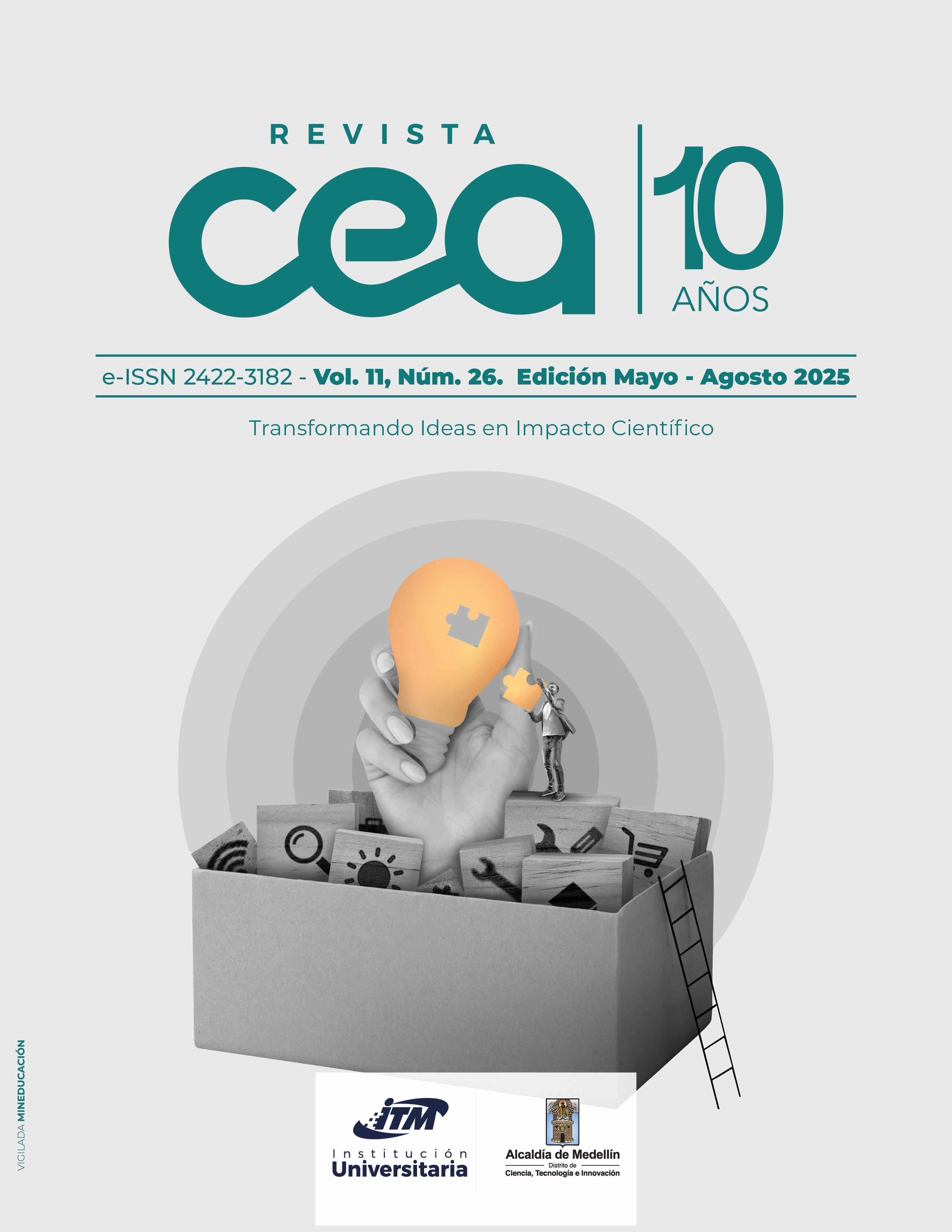An Exploratory Study of Young Colombian Adults’ Preferences for Recommendation Systems in e-Commerce
Abstract
Objective: This study aimed to determine the preferences of young Colombian adults regarding recommendation systems in e-commerce, with a view to identifying key considerations that positively impact their user experience.
Design/Methodology: An exploratory and qualitative approach was adopted. Semi-structured interviews were conducted with young adults who are frequent shoppers, in order to gain insights into their preferences concerning e-commerce recommendations. A content analysis was subsequently performed through three phases: conceptualization, coding, and interpretation.
Findings: The results were organized around three central questions: What do users prefer? When? and How? Participants indicated a clear preference for recommendations that are both attractive and relevant, particularly those tailored to their purchase history, interests, age, location, and gender. Furthermore, they valued suggestions for complementary products and personalized combinations, on special occasions and at specific points during the purchasing process, such as within product detail pages. In contrast, participants rejected recommendations based on one-off purchases, as well as those perceived as intrusive and pressuring in terms of time and availability.
Conclusions: determining participants’ preferences allows for the conclusion that the design of recommendation systems must align with users’ attitudes and behaviors during online shopping. Such alignment is crucial for configuring recommendations in terms of both content and timing, thus facilitating memorable and hyper-personalized experiences. In particular, users value recommendations that help narrow down choices, are based on their profiles, and are presented in a timely and visually appealing manner. These characteristics support more accurate, efficient, and informed decision-making, thereby contributing to a sense of accomplishment and satisfaction. These insights provide a basis for developing guidelines for the design of recommendation systems, which can, in turn, have a positive economic impact for businesses.
Originality: This study extends the analysis of user experience design by offering practical insights into the development of personalized and timely recommendation systems, while avoiding the use of dark patterns. Moreover, it sheds light on how technology and the perceptions of young adults in the Latin American context interact to create exceptional e-commerce experiences in an environment characterized by abundant options and recommendations.
References
Abed, L. Y., Hamad, M. M., y Aljaaf, A. J. (2023). A review of marketing recommendation systems. AIP Conference Proceedings, 2591(1), 2880202. https://doi.org/10.1063/5.0119651
Alejandres-Sánchez, H. O., González Serna, J. G., y González-Franco, N. (2016). Efecto de explicaciones sobre la confianza del usuario en sistemas de recomendación sensibles al contexto. Ingeniería Investigación y Tecnología, 17(4), 419-428. https://doi.org/10.1016/j.riit.2016.11.001
Alvarado, O., Abeele, V. V., Geerts, D., y Verbert, K. (2019). I Really Don’t Know What Thumbs Up’ Means: Algorithmic Experience in Movie Recommender Algorithms. En D. Lamas, F. Loizides, L. Nacke, H. Petrie, M. Winckler y P. Zaphiris (eds.), Human-Computer Interaction – INTERACT 2019 (pp. 521-541). Springer International Publishing. https://doi.org/10.1007/978-3-030-29387-1_30
Alvarado, O., Heuer, H., Vanden Abeele, V., Breiter, A., y Verbert, K. (2020). Middle-Aged Video Consumers’ Beliefs About Algorithmic Recommendations on YouTube. Proceedings of the ACM on Human-Computer Interaction, 4(CSCW2), Art.121, 1-24. https://doi.org/10.1145/3415192
Cardoso Sampaio, R., y Lycarião, D. (2022). Análise de conteúdo categorial: Manual de aplicação. ENAP. https://repositorio.enap.gov.br/bitstream/1/6542/1/Analise_de_conteudo_categorial_final.pdf
Champiri, Z. D., Mujtaba, G., Salim, S. S., y Yong Chong, C. (2029). User Experience and Recommender Systems. En 2019 2nd International Conference on Computing, Mathematics and Engineering Technologies (iCoMET) (pp. 1-5). IEEE. https://doi.org/10.1109/ICOMET.2019.8673410
Cremonesi, P., Elahi, M., y Garzotto, F. (2017). User interface patterns in recommendation-empowered content intensive multimedia applications. Multimedia Tools and Applications, 76, 5275–5309. https://doi.org/10.1007/s11042-016-3946-5
Esmeli, R., Can, A. S., Awad, A., y Bader-El-Den, M. (2025). Understanding customer loyalty-aware recommender systems in e-commerce: An analytical perspective. Electronic Commerce Research. https://doi.org/10.1007/s10660-025-09954-6
Falconnet, A., Coursaris, C. K., Beringer, J., Van Osch, W., Sénécal, S., y Léger, P.-M. (2023). Improving User Experience with Recommender Systems by Informing the Design of Recommendation Messages. Applied Sciences, 13(4), 2706. https://doi.org/10.3390/app13042706
Fink, L., Newman, L., y Haran, U. (2024). Let me decide: Increasing user autonomy increases recommendation acceptance. Computers in Human Behavior, 156, 108244. https://doi.org/10.1016/j.chb.2024.108244
Foundation Mozilla. (2021). YouTube Regrets. A crowdsourced investigation into YouTube's recommendation algorithm. foundation.mozilla.org. https://assets.mofoprod.net/network/documents/Mozilla_YouTube_Regrets_Report.pdf
Guest, G., Bunce, A., y Johnson, L. (2006). How many interviews are enough? An experiment with data saturation and variability. Field Methods, 18(1), 59-82. https://doi.org/10.1177/1525822X05279903
Harambam, J., Bountouridis, D., Makhortykh, M., y Van Hoboken, J. (2019). Designing for the better by taking users into account: a qualitative evaluation of user control mechanisms in (news) recommender systems. En T. Bogers, A. Said, P. Brusilovsky y D. Tikk (eds.), RecSys '19: Proceedings of the 13th ACM Conference on Recommender Systems (pp. 69-77). ACM. https://doi.org/10.1145/3298689.3347014
Huu, P. T., Thien, H. N., Duc, N. S., y Ty, N. T. (2022). Recommendation systems: A systematic review. Computer Engineering and Intelligent Systems, 13(4), 26-33. https://doi.org/10.7176/CEIS/13-4-04
Kollmer, T., y Eckhardt, A. (2023). Dark Patterns. Business & Information Systems Engineering, 65, 201-208. https://doi.org/10.1007/s12599-022-00783-7
Knijnenburg, B. P., Willemsen, M. C., Gantner, Z., Soncu, H., y Newell, C. (2012). Explaining the user experience of recommender systems. User Modeling and User-Adapted Interaction, 22(4–5), 441–504. https://doi.org/10.1007/s11257-011-9118-4
Millecamp, M., Htun, N.N., Jin, Y., y Verbert, K. (2018). Controlling Spotify Recommendations: Effects of Personal Characteristics on Music Recommender User Interfaces. En T. Mitrovic, J. Zhang, L. Chen y D. Chin (eds.), UMAP '18: Proceedings of the 26th Conference on User Modeling, Adaptation and Personalization (pp. 101–109). ACM. https://doi.org/10.1145/3209219.3209223
Nielsen, J. (1994, 24 de abril). 10 Usability Heuristics for User Interface Design. NN/g Nielsen Norman Group. https://www.nngroup.com/articles/ten-usability-heuristics/
Ozok, A., Fan, Q., y Norcio, A. F. (2010). Design guidelines for effective recommender system interfaces based on a usability criteria conceptual model: results from a college student population. Behaviour & Information Technology, 29(1), 57-83. https://doi.org/10.1080/01449290903004012
Parra, D., y Brusilovsky, P. (2015). User-controllable personalization: A case study with SetFusion. International Journal of Human-Computer Studies, 78, 43-67. https://doi.org/10.1016/j.ijhcs.2015.01.007
Pasrija, V., y Pasrija, S. (2024). Demystifying Recommendations: Transparency and Explainability in Recommendation Systems. International Journal for Research in Applied Science and Engineering Technology, 12(2), 1376-1383. https://doi.org/10.22214/ijraset.2024.58541
Pu, P., Chen, L., y Hu, R. (2011). A user-centric evaluation framework for recommender systems. En B. Mobasher, R. Burke, D. Jannach y G. Adomavicius (eds.), RecSys '11: Proceedings of the fifth ACM conference on Recommender systems (pp. 157–164). ACM. https://doi.org/10.1145/2043932.2043962
Pu, P., Chen, L., y Hu, R. (2012). Evaluating recommender systems from the user’s perspective: survey of the state of the art. User Modeling and User-Adapted Interaction, 22, 317-355. https://doi.org/10.1007/s11257-011-9115-7
Qian, K., y Jain, S. (2024). Digital Content Creation: An Analysis of the Impact of Recommendation Systems. Management Science, 70(12), 8217-9119. https://doi.org/10.1287/mnsc.2022.03655
Roy, D., y Dutta, M. (2022). A systematic review and research perspective on recommender systems. Survey paper. Journal of Big Data, 9(59). https://doi.org/10.1186/s40537-022-00592-5
Ruiz, C., y Quaresma, M. (2021). UX aspects of AI principles: The recommender system of VoD platforms. En M. M. Soares, E. Rosenzweig y A. Marcus (eds.), Design for Contemporary Technological Environments, 10th International Conference, DUXU 2021 (pp. 535–552). Springer. https://doi.org/10.1007/978-3-030-78227-6_38
Siles, I., Espinoza-Rojas, J., Naranjo, A., y Tristán, M. F. (2019). The Mutual Domestication of Users and Algorithmic Recommendations on Netflix. Communication, Culture and Critique, 12(4), 499-518. https://doi.org/10.1093/ccc/tcz025
Smits, A., y Van Turnhout, K. (2023). Towards a Practice-Led Research Agenda for User Interface Design of Recommender Systems. En J. Abdelnour Nocera, J., M. Kristín Lárusdóttir, H. Petrie, A. Piccinno y M. Winckler (eds.), Human-Computer Interaction – INTERACT 2023. INTERACT 2023. Lecture Notes in Computer Science, vol 14144 (pp. 170-190). Springer. https://doi.org/10.1007/978-3-031-42286-7_10
Sued, G. E. (2022). Entrenar al algoritmo: gobernanza, agencia y literacidad en el uso de YouTube. Contratexto, 37(037), 159-182. https://doi.org/10.26439/contratexto2022.n037.5331
Swearingen, K., y Sinha, R. (2001). Beyond Algorithms: An HCI Perspective on Recommender Systems. En ACM SIGIR. Workshop on Recommender Systems, Vol. 13, Numbers 5-6 (pp. 393-408). ACM Press.
Swedberg, R. (2020). Exploratory research. En C. Elman, J. Gerring y J. Mahoney (eds.), The production of knowledge: Enhancing progress in social science (pp. 17-41). Cambridge University Press. https://doi.org/10.1017/9781108762519
Tenganá Hurtado, A., y Barreto Pérez, J. (2022). Sistema de recomendación de viviendas nuevas para una empresa de venta de bienes raíces en línea [tesis de maestría, Universidad de los Andes]. Repositorio Uniandes. https://hdl.handle.net/1992/59233
Tonon, G. (2009). La entrevista semi-estructurada como técnica de investigación. En G. Tonon (ed.), Reflexiones latinoamericanas sobre investigación cualitativa (pp. 47-68). Prometeo.
Uribe Lujan, M. (2022). Prototipo de un sistema de recomendación para la oferta de convenios de los empleados de la Compañía Suramericana [tesis de maestría, Universidad Nacional de Colombia]. Repositorio Unal. https://repositorio.unal.edu.co/handle/unal/82169
Valencia-Arias, A., Uribe-Bedoya, H., González-Ruiz, J., Sánchez Santos, G., Chapoñan Ramírez, E., y Martínez Rojas, E. (2024). Artificial intelligence and recommender systems in e-commerce. Trends and research agenda. Intelligent Systems with Applications, 24, 200435. https://doi.org/10.1016/j.iswa.2024.200435
Downloads
Copyright (c) 2025 Alecia Eleonora Acosta Freites, Lina Rojas, Darío Reyes Reina, Angela Patricia Villareal Freire, Ricardo Cardona

This work is licensed under a Creative Commons Attribution-NonCommercial-ShareAlike 4.0 International License.

| Article metrics | |
|---|---|
| Abstract views | |
| Galley vies | |
| PDF Views | |
| HTML views | |
| Other views | |







